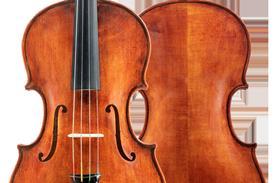- More from navigation items
- Home
- News
- For Subscribers
- Student Hub
- Playing Hub
- Podcast
- Lutherie
- Magazine
- Magazine archive
- Whether you're a player, maker, teacher or enthusiast, you'll find ideas and inspiration from leading artists, teachers and luthiers in our archive which features every issue published since January 2010 - available exclusively to subscribers. View the archive.
- Jobs
- Shop
- Directory
- Contact us
- Subscribe
- Competitions
- Reviews
- Debate
- Artists
- Accessories
Suzuki teaching: Every child can

Since Japanese violinist Shinichi Suzuki founded his method of bowed string tuition in 1945, it has been adopted and embraced by countries around the world. Samara Ginsberg talks to teachers and students, past and present, about their experiences of Suzuki teaching and its enduring popularity
Developed by violinist and pedagogue Shinichi Suzuki in 1945, the Suzuki Method has been one of Japan’s most successful exports. Designed specifically to meet the needs of very young learners, it capitalises on small children’s natural aptitude for language acquisition by facilitating the same process with music. The core principles are repetition, reviewing previously learnt material, learning by ear, and heavy parental involvement (forming part of the equilateral ‘Suzuki triangle’ of parent, teacher and child). On a broader philosophical level, there is an insistence that any child can learn to be talented, and a discouragement of competition.
Today there are growing Suzuki programmes involving hundreds of thousands of students in 74 countries. Although other instruments have been added to the Suzuki arsenal over the years, bowed string players still represent the majority of teachers and students.
The Suzuki Method has been a particularly big hit in the US, thanks in large part to the work of John D. Kendall, who first travelled to Japan to observe the method in 1959. Annette Costanzi is a Suzuki cello teacher and teacher trainer with almost 50 years’ experience on several continents. She says: ‘They didn’t have a national system in place. For instance, there was the Russian school, the French school, the German school – these countries had developed their own schools of training. Once Suzuki hit America it was pretty fertile. It wasn’t going against another system. And because it’s so primal it works in any culture. When you actually get down to teaching children, they’re the same all over the world. They’re not going to be different because they were born into another culture.’…
Already subscribed? Please sign in
Subscribe to continue reading…
We’re delighted that you are enjoying our website. For a limited period, you can try an online subscription to The Strad completely free of charge.
* Issues and supplements are available as both print and digital editions. Online subscribers will only receive access to the digital versions.




























